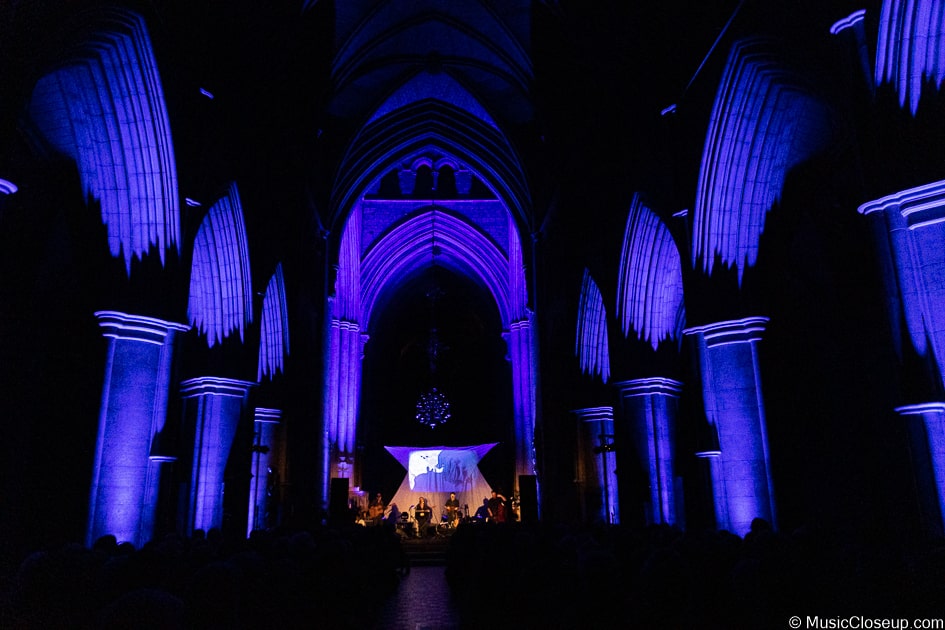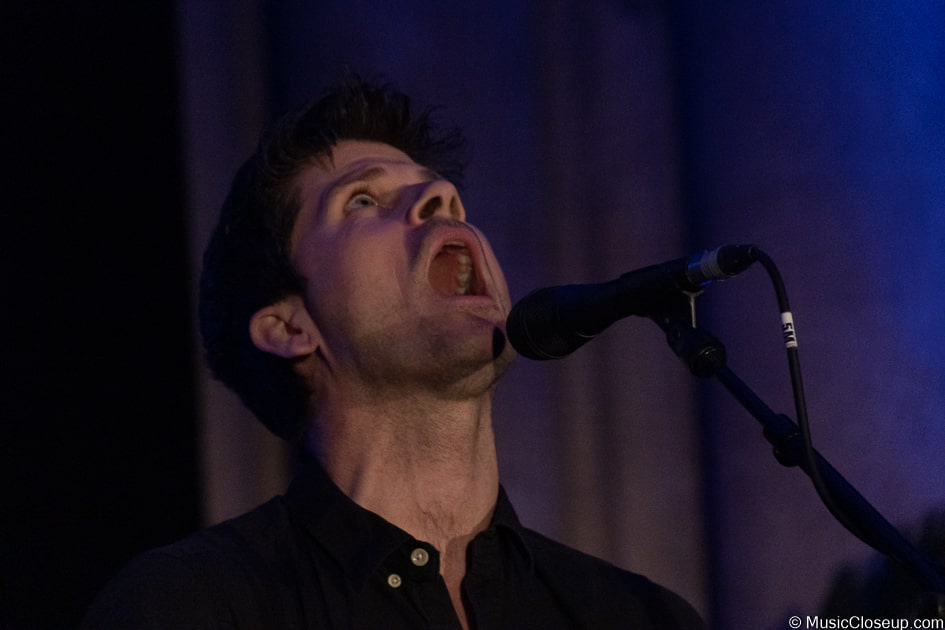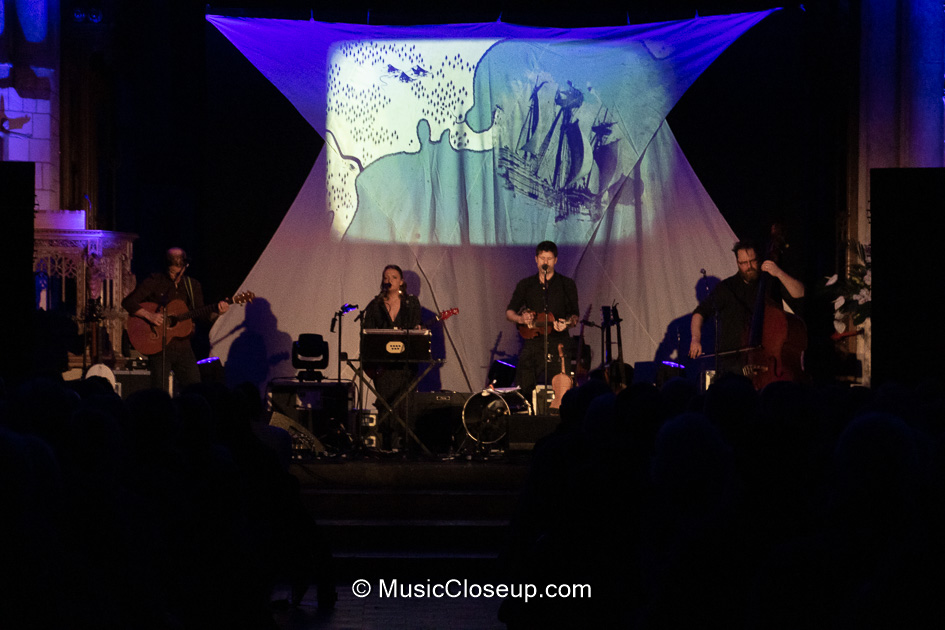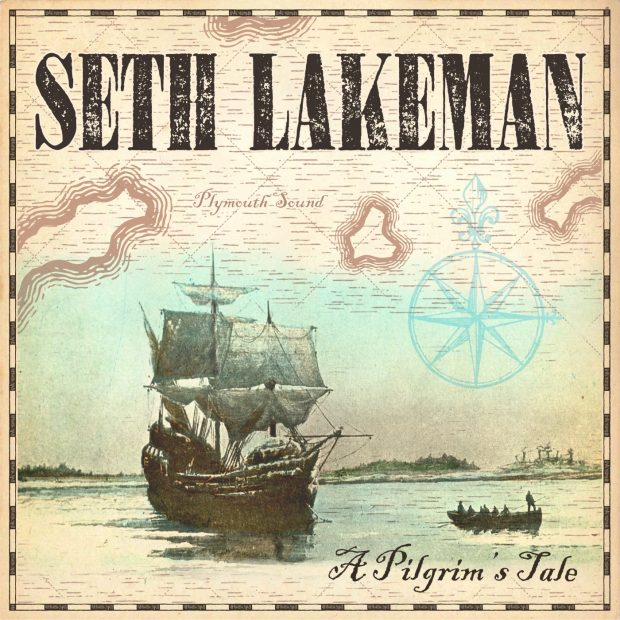Before we knew what a significant place 2020 would hold in world history, one of the events of the year was meant to be the 400th anniversary of the Mayflower setting sail.
Having visited Plymouth Plantation in Massachusetts after an upbringing in Plymouth in Devon, folk music mainstay and Mercury Prize nominee Seth Lakeman felt compelled to take on the history from both sides. He created an album that combined music and chronicle, and toured it around places significant to the Mayflower story. We saw how the Southwark Cathedral stop was a spellbindingly immersive experience uniting sound, light and story.

“The People of the First Light had inhabited the land for 10,000 years until the Europeans came…”
The record opens with a solemn historical narrative, the kind that would be criticised in some circles for being too right-on – except the story is true and deserves to be told.
Watch Out has a gothic vibe, at once strident and ethereal. There’s something of a folky, traditionalist Crowded House vibe to the sound.
The next spoken word section covers Henry VIII’s split from Rome and Catholicism. It’s quite a feat to simply and successfully position history in its wider context like this. Paul McGann does his job well, straddling the line between sharing history and narrating the art: “they sing a song of hope and freedom as they look to the future.”
Pilgrim Brother is fittingly joyful and hopeful, depicting a time long past in a way that surely wouldn’t feel out of place in that time. Lakeman’s vocal is compelling, backed by jaunty, driving instrumentation.
Westward Bound is much more foreboding and hesitant as the protagonist contemplates the dangerous journey. The near-acapella piece is interrupted by a heavy rock riff and fiddling jig as the voyage gets closer. The group dance and sing to celebrate the promise of the new world.
If you’re most familiar with the Mayflower’s history from the American perspective about the arrival, it gives pause for thought to hear the beloved pilgrims described as ‘separatists.’
A Pilgrim’s Warning is another trepidatious tune. It has a marked Fleetwood Mac air with a gorgeous vocal from Cara Dillon underpinning Lakeman’s distinctive lament.

Now we hear from the crew, a group not usually featured in the traditional Mayflower mythos. It’s a poignant perspective.
102 men, women and children crowd is as winter storms batter the ship. Again, it’s rather fascinating to hear about the actual journey, not just the landing and first year. It transpires that A Great Iron Screw intended for building the colony’s structures was needed to shore up damage to the ship. The accompanying song is insistent and urgent with rise and fall evoking the vulnerable ship lurching in the waves.
Finally we return to the Wampanoag people. The young girl who had a premonition of people arriving in a strange boat is now old and blind, but still predicting the influx. Fear is palpable.
Meanwhile, the Mayflower Compact is drawn up to manage disputes between the settlers and the crew; a new model of democracy for the ‘new world.’

Dear Isle of England sees the travellers looking back and forth, both “exiled and free.”
They land and immediately cause havoc. It’s quite a shock to the system to ear about the oft-feted pilgrims pillaging stored grain and grave goods.
Saints and Strangers picks out a mournful air with poignant lyrics: “once we were many, now we are few/once we were stronger than you.”
The Foreign Man depicts the first year filled with skirmishes, hard work and disease. 49 people died, over half of the nascent colony. Of course, we view history and art through the lens of our own experiences; the lyric “track and trace” takes on a different meaning now!
Bury Nights is the lament of an old man who has fallen at leader William Bradford’s feet: “here I dwell/a broken vow you fondly gave to me/of lands and fields/of soaring hearts/here let my bury be.” It’s spine-chilling.
Spring 1621 saw a pragmatic treaty drawn up for mutual survival. The native people show the newcomers how to plant corn and beans; The Digging Song is a hopeful, determined work song.
William Bradford addresses the settlers prophetically: “The darkness is over. We will flourish here.” The mournful Mayflower Waltz commemorates this milestone and closes out a powerful album steeped in history and nuance.
A Pilgrim’s Tale is out now on Absolute.
Discover more from Music Closeup
Subscribe to get the latest posts sent to your email.
